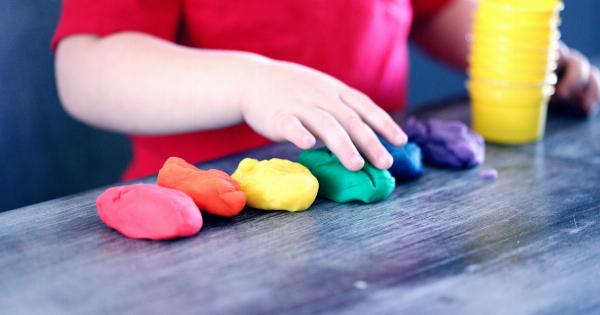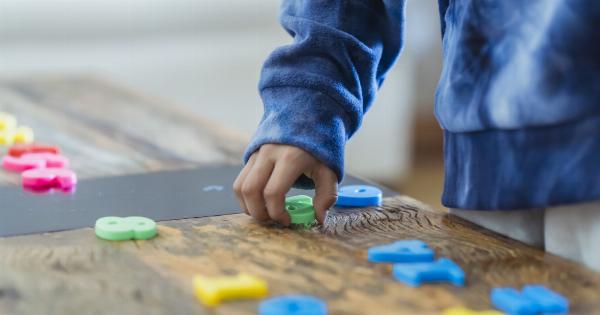Color vision is an essential aspect of our everyday lives, allowing us to perceive and interpret our surroundings. Most individuals have no trouble distinguishing between various colors, but some children may struggle with this skill.
If you’ve noticed that your child is having difficulty differentiating between colors, you may be wondering why. In this article, we will explore some possible reasons why your child may be struggling to distinguish colors and how you can support their development in this area.
1. Color Vision Deficiency
One possible reason for your child’s struggles with color differentiation could be color vision deficiency, also known as color blindness.
Color vision deficiency is a genetic condition that affects the way individuals perceive and interpret colors. Most commonly, it occurs in boys rather than girls. People with color blindness have difficulty distinguishing certain colors or may see them as different shades or hues.
If you suspect that your child has color vision deficiency, it is essential to have them evaluated by an eye-care professional.
Although there is no cure for color blindness, early detection can help you and your child understand their unique visual perception and make any necessary accommodations.
2. Visual Processing Difficulties
Visual processing refers to the brain’s ability to interpret visual information received from the eyes. Some children may struggle with visual processing, making it challenging for them to recognize and differentiate between colors.
Visual processing difficulties can stem from various underlying causes, such as developmental delays, learning disabilities, or neurological conditions.
If your child is struggling with visual processing difficulties, it is important to consult with a pediatrician or an occupational therapist.
They can assess your child’s visual processing skills and provide strategies or interventions to support their color differentiation abilities.
3. Lack of Exposure to Colors
Children need exposure to a wide range of colors to develop their color vision effectively.
If your child has limited exposure to colors or spends the majority of their time in an environment with a restricted color palette, they may struggle to differentiate between various shades. For example, if they are primarily exposed to neutral colors like white, gray, and beige, they may find it challenging to identify vibrant or subtle hues.
Ensure that your child has ample exposure to a variety of colorful environments, both indoors and outdoors. Encourage art activities, play with colored toys, and expose them to diverse visual stimuli, such as books, pictures, and nature.
With consistent exposure to a full spectrum of colors, their ability to distinguish between different shades will likely improve over time.
4. Language and Labeling
The process of distinguishing colors involves not only visual perception but also the ability to understand and label them correctly. Some children may struggle to associate specific colors with their appropriate labels.
They may have difficulty remembering color names or using them accurately in conversations.
To support your child’s understanding and labeling of colors, use descriptive language when discussing different hues. Point out colors in their immediate environment and encourage them to name the colors they see.
Additionally, provide plenty of opportunities for them to practice color identification through games, puzzles, and everyday activities.
5. Cognitive Development
Color differentiation is a complex cognitive skill that develops over time. Some children may take longer to grasp the concept of colors and their variations due to their individual cognitive development.
It is important to remember that children reach developmental milestones at different rates, and their ability to distinguish colors will also vary.
Patience is crucial when supporting your child’s understanding of colors. Offer them opportunities to explore colors in a relaxed and playful environment.
Engage in activities that promote color recognition, such as sorting objects by color or playing with color-themed puzzles. Eventually, with consistent practice and gentle guidance, they will likely improve their color differentiation skills.
6. Attention Difficulties
Children with attention difficulties, such as attention deficit hyperactivity disorder (ADHD), may find it challenging to focus on and differentiate between different colors.
Their attention may shift quickly or they may become easily overwhelmed by the visual stimulation of multiple colors.
If your child struggles with attention difficulties, consider creating a calm and organized environment when introducing colors. Minimize distractions and create a dedicated space for color-related activities.
Break tasks into smaller, manageable parts and use visual cues or prompts to help them focus their attention on specific colors.
7. Emotional Factors
Emotional factors can also play a role in a child’s ability to distinguish colors. Stress, anxiety, or negative emotions can affect their visual perception and make color differentiation seem more challenging than it actually is.
Additionally, some children may become frustrated or self-conscious if they struggle with color recognition, further hindering their progress.
When supporting your child’s color differentiation skills, create a positive and encouraging atmosphere. Celebrate their achievements, no matter how small, and provide reassurance if they become frustrated.
By fostering a nurturing environment, you can help them build confidence and reduce any emotional barriers that may be affecting their color perception.
8. Motor Skills and Coordination
The process of distinguishing colors involves not only visual perception but also hand-eye coordination.
Children need the ability to associate color information received by their eyes with corresponding motor actions, such as pointing, grasping, or manipulating objects.
If your child is struggling with color differentiation, it may be helpful to enhance their motor skills and coordination.
Engage in activities that require them to interact with colored objects, such as stacking blocks of different colors or drawing with colored pencils. These activities can strengthen the connection between visual perception and motor actions, supporting their overall color recognition abilities.
9. Cultural Differences
It is important to note that cultural factors can influence a child’s perception and understanding of colors. Different cultures may prioritize or label colors differently, which can affect a child’s color differentiation abilities.
For example, some languages may have fewer color terms, making it more challenging for children to differentiate between specific shades.
If you come from a multilingual or multicultural background, ensure that your child is exposed to the color terminology used in the society they will interact with most frequently.
This exposure will allow them to navigate color-related conversations effectively and promote their color recognition skills accordingly.
10. Individual Learning Style
Every child has a unique learning style, and this extends to their ability to differentiate between colors. Some children may benefit from visual aids, such as color charts or flashcards, to reinforce their understanding of colors.
Others may respond better to hands-on activities or auditory cues when learning about colors.
Observe your child’s preferred learning style and adapt your teaching strategies accordingly. Provide them with various learning materials and methods to find the approach that best supports their color recognition abilities.
In conclusion, there can be several reasons why your child may be struggling to distinguish colors.
Color vision deficiency, visual processing difficulties, lack of exposure to colors, language and labeling issues, cognitive development, attention difficulties, emotional factors, motor skills and coordination, cultural differences, and individual learning styles can all play a role. By understanding these factors and providing appropriate support and opportunities, you can help your child improve their color differentiation skills and enhance their overall visual perception.






























